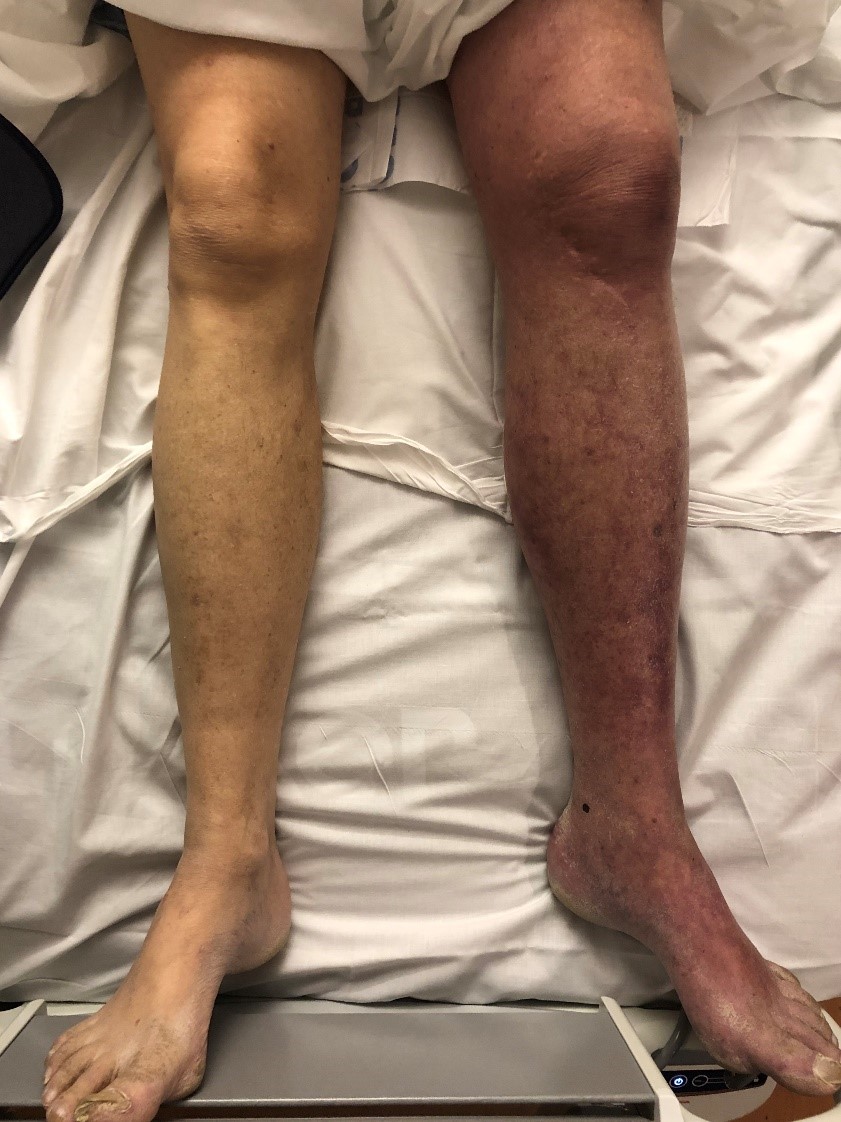Case Presentation: 60-year-old gentleman with a history of autoimmune hemolytic anemia presented to emergency department with acute onset of severe left leg pain, edema, and cyanosis. On examination of his left leg, pulses were not palpable distal to posterior tibialis but motor functions remained intact. There were no blebs or bullae noted. He was requiring six liters of oxygen but was afebrile with normal heart rate and respirations. Laboratory investigation showed leukocytosis, creatinine1.8 mg/dL, and creatinine phosphokinase 245 U/L. Hemoglobin was 10.6, down from 15.0 four weeks prior. Duplex ultrasound confirmed an extensive occlusive DVT of left femoral popliteal system and calf veins. CTA chest demonstrated massive bilateral segmental pulmonary embolisms. These finding were consistent with phlegmasia cerulea dolens. The patient was started on a heparin drip and vascular surgery emergently performed transcatheter localized tPA administration to the left lower extremity DVT. Two days later, a CTA confirm successful lysis of the clot. The patient was subsequently diagnosed with relapse of his known autoimmune hemolytic anemia (AIHA) and started on high dose steroids. His anticoagulation was eventually transitioned to apixiban and advised for lifelong anti-coagulation treatment. The patient recovered fully. Since this admission, the patient’s AIHA has been difficult to control requiring frequent hospitalizations but has not had another thrombotic event.
Discussion: Phlegmasia cerulea dolens (PCD) is a rare but life-threatening complication of acute venous thromboembolism (VTE) characterized by severe pain, diffuse swelling, and cyanosis of the effected limb. Though up to 1% of hospital admission in the United States are for VTE [2], PCD is an exceedingly small proportion of these admission. Thrombotic events are a common feature of autoimmune disease, especially autoimmune hemolytic anemia where VTE rates during an AIHA episode can be as high as 23% [1].Prophylactic anticoagulation should be considered for patients with AIHA as no systematic screening standards for VTE have been established. There is no gold standard for treatment of PCD though goals for treatment should revolve around improving venous patency and valve function as well as preventing recurrence. Modalities include local thrombolysis, pharmacomechanical thrombolysis and surgical thrombectomy. Need for fasciotomy and/or amputation are high due to the rapid progression of disease. Amputation rates have been estimated at 20-50% with mortality rates reaching 40% [2].
Conclusions: Phlegmasia cerulea dolens with associated autoimmune hemolytic anemia is a rare condition that requires rapid identification and carries high rates of complication with no definitive treatment course due to the rarity of the condition. Rapidity of presentation is particularly dramatic. Gangrene with high amputation rates and mortality is a common complication if not promptly identified and treated.

